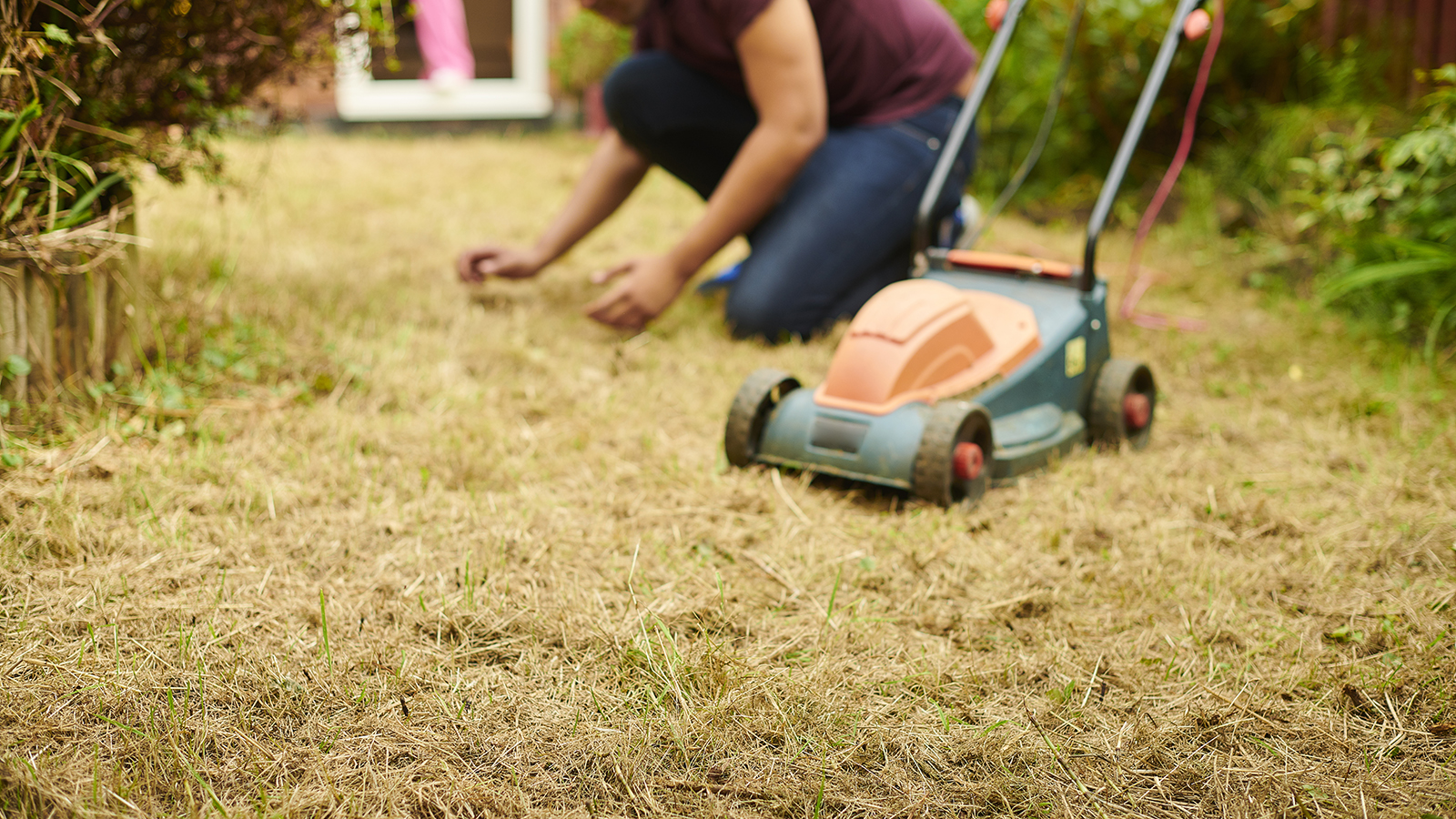How to plan bathroom lighting to create a blissful sanctuary
Take your bathroom to the next level of spa-like indulgence with a versatile lighting scheme that will always set the right mood

The ideal bathroom lighting can be many things to many people. It can be designed to create a relaxing sanctuary, a bathtime play area, a make up or shaving station, or a bright, start-the-day space for the whole family.
Having multiple functions means when designing your bathroom, it's important to get the right lighting for each zone to set the tone and provide adequate illumination.
Conditions also have to be taken into consideration. Excess amounts of spray and steam from taps and showers makes the bathroom the wettest room in the house, requiring different levels of protection for lights to be used safely.
Our experts advise on how to transform what could be a functional but characterless space into a spa-like escape with a layered lighting scheme that caters to its many uses.
Planning ahead
When designing your lighting system, the old adage of fail to prepare, prepare to fail really holds true.
Planning the lighting must be one of the initial steps in any bathroom renovation so all the necessary wiring can be done as part of the first fix stage.
Neglecting to do this before the walls and ceiling are plastered over and decorated can lead to a messy and complicated attempt at retrofitting later.
“When renovating a bathroom, it’s typically recommended to fit lighting prior to painting, papering and tiling the walls," says lighting expert Sam Garbutt, from LED & Power. “This provides better access to the wall for installing new wiring and switches, while also ensuring that you don't damage the newly installed tiling or cause paint chips.
“If you’re worried about getting paint on your lights when decorating after installation, use masking tape to cover the edge of the light fixture.”
For post-installation decorative fixes, use removable Frog Tape from Amazon to protect anything installed prior to painting that cannot safely be unscrewed.
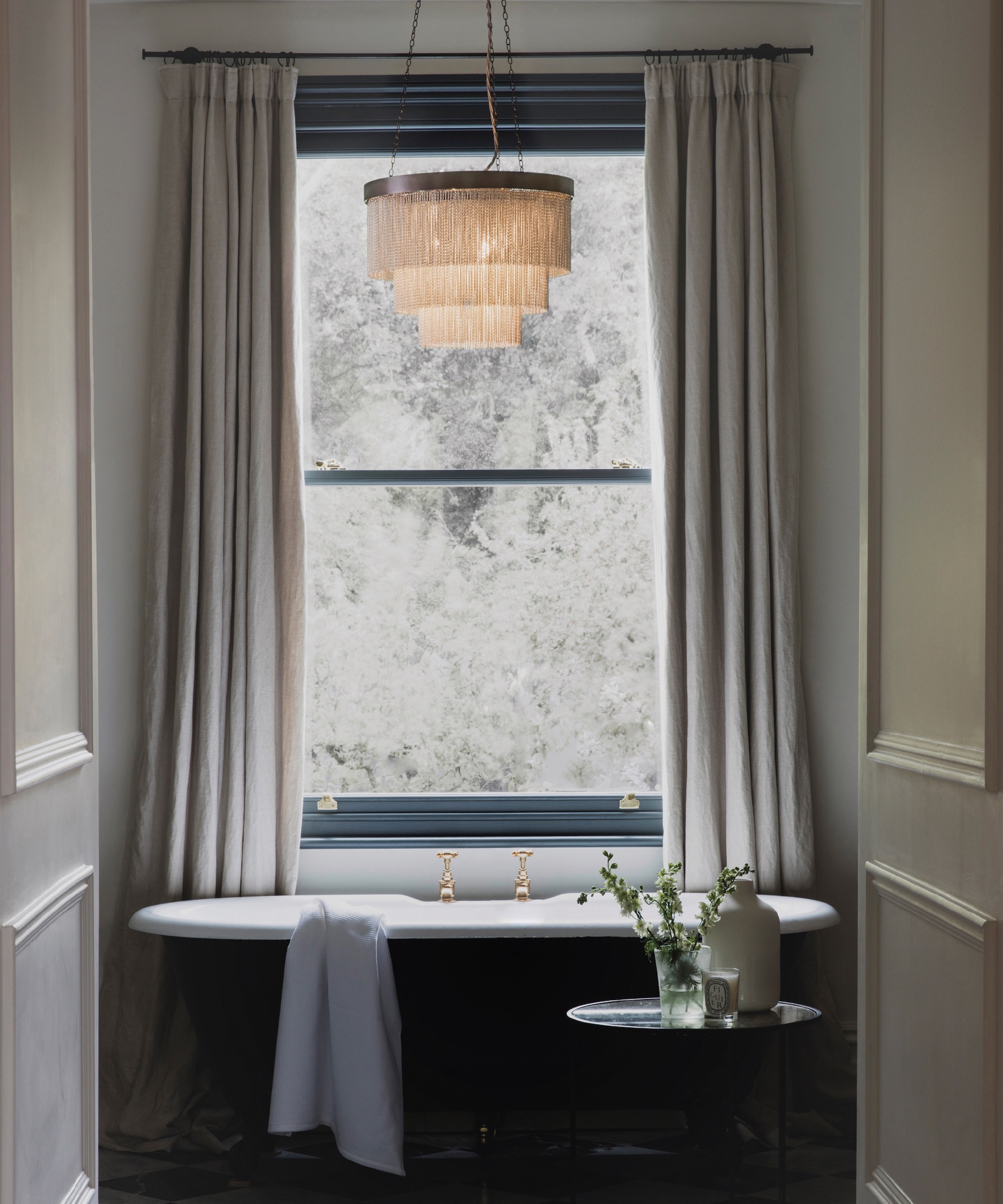
Planning the lighting should be a step-by-step process.
1. First think about the function of the space. How will it be used? Where will sanitaryware be placed? Where will there be natural lighting? Are you going to have a bathtub, just a walk-in shower or a combination of both? Is the sink being repositioned and will there be a wall or a window above it?
2. Moodboard your bathroom. Deciding on the style of decor will help you commit to the type of lighting fixtures you want. For instance, are you set on creating a glamorous retreat with a chandelier hanging above the tub, or do you prefer it sleek and contemporary with multiple inset lights setting a relaxing mood? Do you want side lights around your task mirror, or will the light come from the mirror itself?
3. Be practical. Consider who will be using your bathroom and when. Make sure there are no dark corners or a risk of slipping on wet floors if people use the bathroom at night. Low-level lighting round the bath can provide enough illumination to walk across the floor safely without trips or stubbed toes. Lighting in shelf recesses can also help to access toiletries without knocking things off or over.
4. Where will the controls be? Traditionally light switches were placed just outside the bathroom due to the risk of being shocked from touching it with wet hands. Pull cords inside the bathroom could operate switches out of reach on the ceiling. As the use of smart technology is on the increase, phone apps, remote control and voice command can new be used to modify lighting, even in bathrooms.

Having worked in lighting since 2016, Sam, who is a director at LED & Power, has a wide range of knowledge regarding the best lighting practices to create a practical and aesthetically pleasing space.
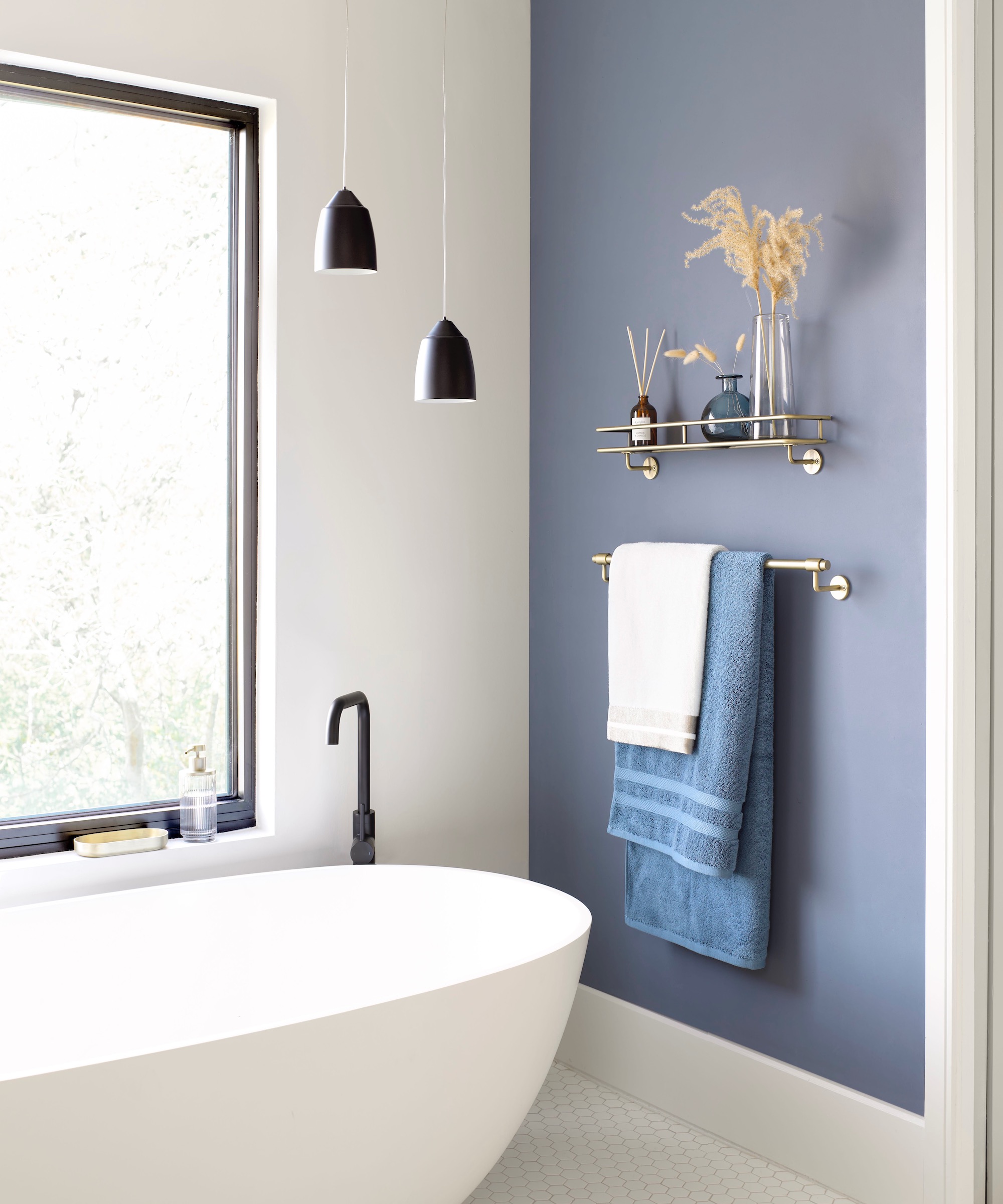
Know your zones
Because of the high levels of water use in a bathroom from the tub, the sink, the shower and the toilet, light fixtures can be exposed to steam or splashes.
A special rating system indicates whether any new lighting you have planned for your renovated space can be used safely and effectively.
“All lighting fixtures used in the bathroom, shower or wet room should comply with relevant safety regulations,” says James Dowsing-Reynolds of Dowsing & Reynolds. “Check the IP ratings (Ingress Protection) as this refers to the level of protection from water and steam entering the fitting. The higher the IP rating is, the more protected the light is.”
Such rooms are helpfully divided into zones that act as a guide to the right level of IP rating needed for that specific area, explains Sam.
“Zone zero is located the closest to water sources in areas that are in direct contact with water, for instance within a shower or a bath. Lights here require a higher IP rating of IP65 or above, as they have a low voltage for safety reasons and are highly resistant to water damage.
“Zone one includes the areas at risk of water splashes and high amounts of moisture. It’s recommended that a rating of IP65 is used to be on the safe side, however, an IP rating of IP44 can be used if there is definitely no direct source of water on the lights.
“Zone two includes the areas located the furthest away from water sources. They may still have a lot of moisture but are unlikely to come into direct contact with water. For these areas you can use an IP rating of IP44.”
Lights that have an IP65 rating, such as these matt white semi-recessed downlights from Roper Rhodes, can even be used in the shower area.

James is a designer and co-founder of Dowsing & Reynolds. A lighting expert, he is well versed in planning all the elements needed to turn a bathroom into a sanctuary that meets the needs of all its users.
Styles of lighting
“Lighting in the bathroom is often overlooked,” says Louise Ashdown, head of design at West One Bathrooms. “It needs to be bright and clean, so most people just think ‘downlighters in the ceiling’ and job done.
“But the room is used for multiple functions and at different times during the day: having a shower on a rainy afternoon will necessitate different lighting levels than bathing and relaxing in a bath in the evening.
“People are increasingly looking at bathrooms in their own home as personal spas and a place of retreat, and good lighting can really improve one’s sense of well-being when using these spaces.”
There are three different functions of lighting in a bathroom:
1. Task lighting
Overhead ceiling lights can cast shadows on the face, so wall lighting to the side or above the mirror, or even around if it’s part of the mirror, are better for performing tasks like applying make-up, washing or grooming.
“A good neutral or cool light colour is often preferred that won’t alter the shade of what you’re applying,” says Louise.
“Other task lighting may be softer, pathfinding lighting such as small LED strips or flood lights at low level by the WC. These can be operated on a PIR (Passive Infra-Red) sensor and come on automatically when entering the room.”
Highlight your bathroom mirror with a versatile IP44-rated light that can go to the sides or along the top, like the Claremont medium wall light with fine porcelain shades from Corston Architectural.
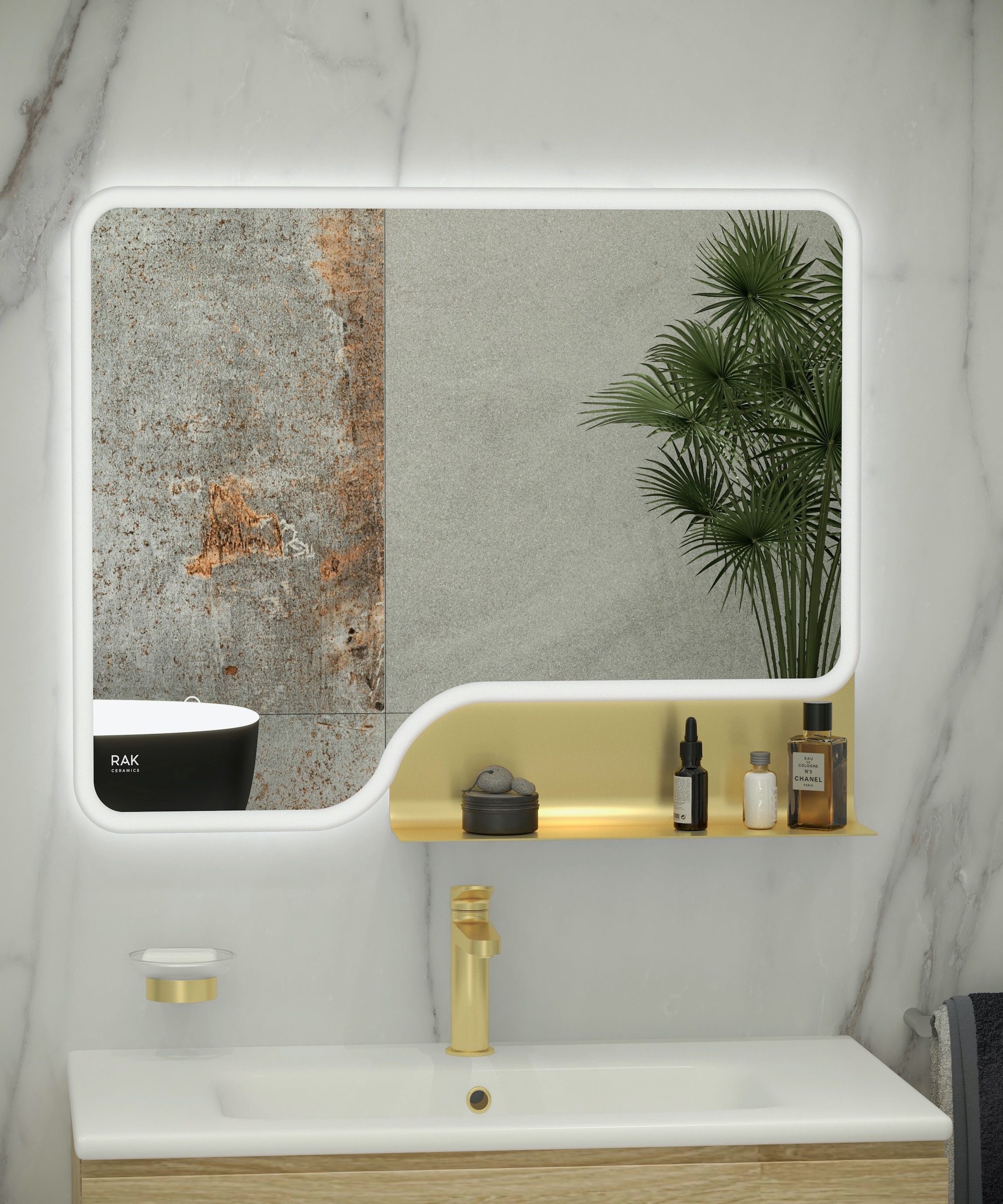
2. Ambient lighting
This provides illumination for the whole room, typically from ceiling-mounted fittings or recessed spotlights.
“Fitting LED strip lights under basin units or bath panelling cast a soft glow, giving the illusion of them floating, and creating a feeling of space and airiness,” Louise adds.
“The colour of ambient lighting can completely change the mood of the room. Neutral white won’t distort other colours used in the bathroom and some Kelvins are practically daylight clear – which is great in a windowless bathroom. Other people will prefer the softer effect of warmer white tones.”
Motion sensors can help give you light when need it, and save energy by switching off when you don't, like with this LED lighting pack from Bathroom City.
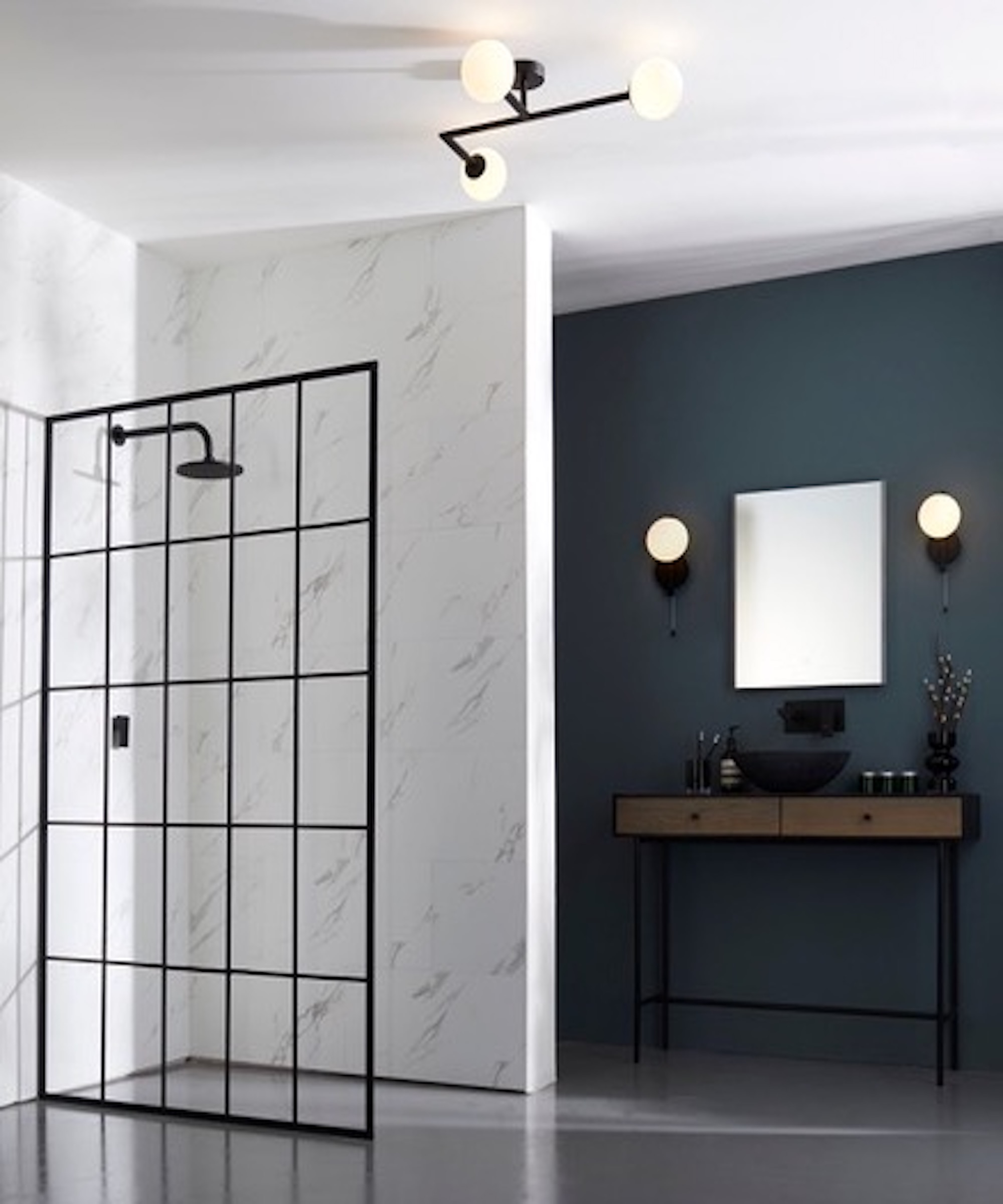
3. Accent lighting
This adds warmth and depth, highlighting architectural features such as display shelving, alcoves or freestanding baths with subtle downlights or LED strip lighting that casts a background glow.
“Clever accent lighting can also bring beautiful tiles to life,” says Louise, “washing the walls with light.”
Create a display feature with illuminated shelving, like this brushed gold RAK Ingot Square Recessed Niche with LED from Victorian Plumbing.

After nearly 20 year working in design for West One Bathrooms, Louise is an expert at creating beautiful spaces that combine practicality and personal style.
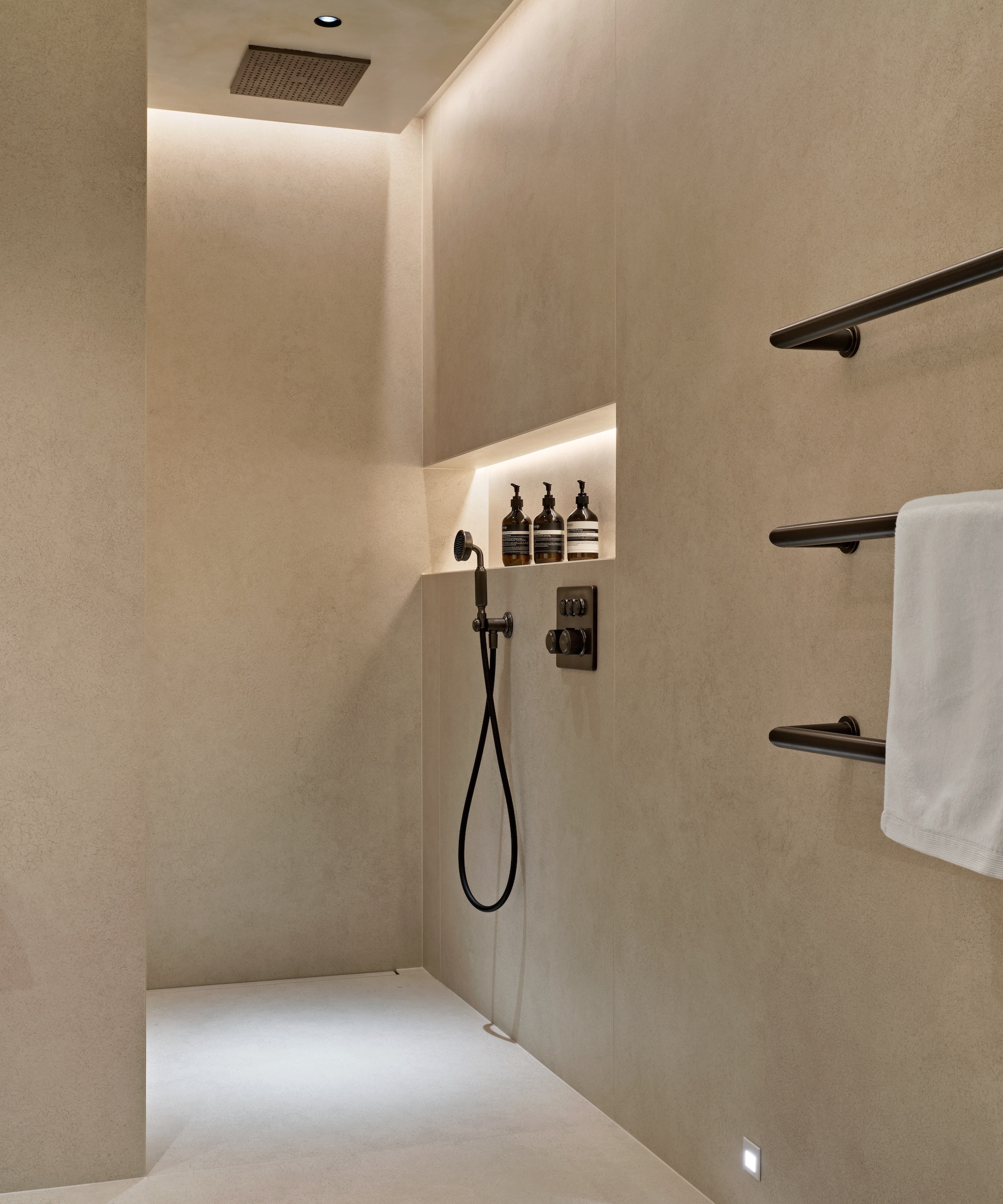
FAQs
Can I use dimmers in a bathroom?
Yes. Incorporating this is good way to adjust the brightness of the lighting depending on the time of day. It can bring an extra dimension in a smaller bathroom with only one or two layers of lighting.
How do I find the right colour of bulb?
Pay attention to the colour temperature of the bulb to help set the right ambience. The lower the number, the warmer the light and the higher, the cooler. For applying makeup, bulbs need to be a high CRI (Colour Render Index), which is the degree to which it represents true daylight, with 100 CRI being closest. The average UK bulb is level 82.
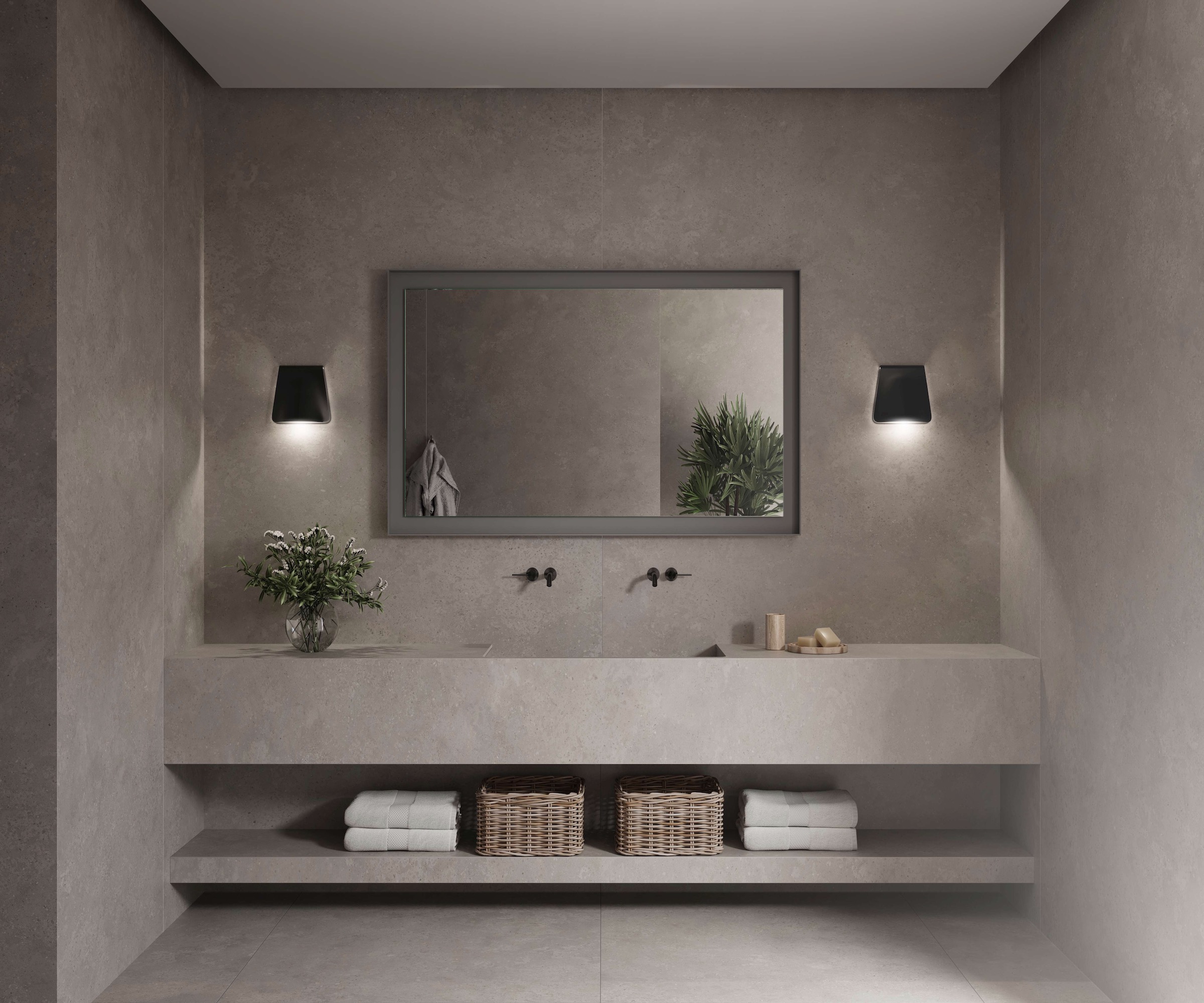
Look to the future when planning your bathroom renovation by incorporating new bathroom innovations and smart ideas. Our experts reveal what to include to give it longevity.
Bring your dream home to life with expert advice, how to guides and design inspiration. Sign up for our newsletter and get two free tickets to a Homebuilding & Renovating Show near you.
